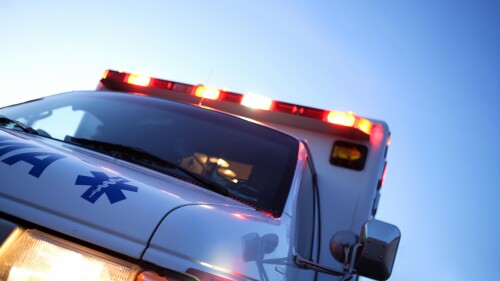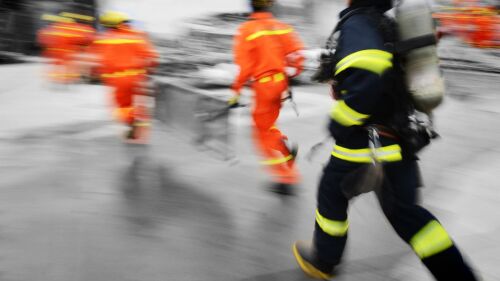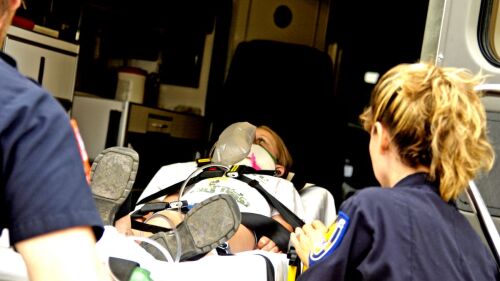BREAKING NEWS
Berks County EMS officials detailed a growing crisis driven by low reimbursement rates, rising costs, agency closures and shrinking staffing
American Medical Response, which handles about 95% of medical transports in Spokane County, will raise base ambulance charges next year
A former Rite Aid in Salem will be converted into a free-standing 24/7 emergency department operated by Parkland Medical Center
The National Registry of Emergency Medical Technicians has opened a public comment period on a member EMS Advisory Group
Backed by a $1.4 million grant, the Plaistow Fire Department’s regional intercept is continuing to provide advanced life support to 18 towns
EXCLUSIVES
SPECIAL REPORTS
UPCOMING & ON-DEMAND EVENTS
New insight into the latest technology
Addressing the hidden dangers of cardiovascular disease
Prepare for the impact of extreme weather on critical infrastructure and EMS operations
Creating, developing and sustaining your own program, step by step
Expert perspectives on improving patient outcomes
Learn from a real-world use case of the rescue strike team and the three phases of deployment
Janet Taylor shares assessment and management tips for mastering seizure thresholds, classification and treatment approaches
What if scheduling and finalizing a transport could be done in 60 seconds?
Learn common triggers, assessment findings, and the different phases and classifications of seizures
Key findings from the Verizon Frontline Public Safety Communications survey
A detailed look at the actions leaders can take to implement a systems-level plan to protect their members
Adopting programs to improve EMS service delivery and agency culture
INDUSTRY INSIGHTS
Discover the benefits of hosting an au pair
These durable, ergonomic mounts help safeguard cardiac monitor investments and streamline the continuum of care
Protecting providers starts with a glove that won’t easily fail
Lessons from agencies mastering real-time collaboration under pressure
Avon Protection showcases the effectiveness and durability of its latest scalable protective system, designed for eye, nose and mouth protection in real-world conditions
WATCH NOW
After the abrupt dismissal of the federal EMS advisory council, outgoing members are stepping up — ensuring the next cohort won’t start cold
OFF DUTY
Summer is great for a lot of activities, but sometimes the heat can put a damper on your workout ambitions
When employees are happy, engaged and productive, and the organization is meeting their individual needs, they are more likely to meet their full potential
Firearms instructor Todd Fletcher went from a competitive power lifter to a retiree managing pre-diabetes and high blood pressure, showing the impact of shift work on wellness
From smartwatches to hydration, here are four mission-ready picks to help you build strength, regulate stress and stay fit for the job — and for life
Score discounted duty gear, workout tools and everyday essentials July 8-11 with our curated list of budget-friendly buys
The series offers a window into the experiences of first responders through the use of real stories from real law enforcement officers, firefighters and EMTs
A Forbes Top Futurist with skin in the game calls for EMS to re-examine how it recruits, relates and retains its people in an era of relentless change
Even if you can’t travel out of town for a vacation, you can still make the most of your time off; here are some tips to help responders enjoy a staycation right at home
By following actionable steps before, during and after a vacation, first responders can embrace the therapeutic power of detachment and fortify their resilience
First responders can take advantage of Amazon Prime Day 2025 deals to stock up on professional tools, gear and essentials without stretching the budget
PRODUCT RESEARCH CATEGORIES
Patient monitoring plays a critical role in prehospital care, enabling EMS providers to track vital signs, assess patient condition, and detect changes in real-time. Monitoring tools include ECG, pulse oximetry, capnography, and blood pressure tracking. These systems support timely decision-making during transport and handoff to hospital teams. Integrated patient monitoring improves documentation accuracy, care continuity, and patient outcomes. Training on device use and data interpretation is essential. EMS Software is another important topic that explores broader tools used in the field. Explore the articles below for guidance on patient monitoring equipment, protocols, and best practices.
Dispatch, call centers, and 911 systems are critical components of emergency response. These operations manage call intake, resource allocation, and communication between dispatchers and field units. Efficient systems and well-trained staff help ensure accurate information, quick response times, and coordinated incident management. Technology like CAD, AVL, and integrated radio systems enhances performance and situational awareness. Dispatch, call centers & 911 services must follow state and national standards for operations and training. Emergency Communications is another important topic focused on tools and infrastructure for responder connectivity. Explore the articles below for insights into staffing, protocols, and system improvements.
The EMS1 Capnography product category features products and information for researching capnography’s use by EMS personnel to aid in their assessment and treatment of patients in the prehospital environment. Click here to download a guide to normal/abnormal capnography waveforms.
The CO Screening product category features products and information for researching CO Screening and Testing, also known as Carbon Monoxide Testing, which covers CO Screening products such as CO meters, as well as resources for carbon monoxide first responder rehabilitation.
Narcotics inventory management is essential for tracking controlled substances used by fire and EMS agencies. Effective systems help ensure accountability, prevent diversion, and maintain compliance with DEA regulations. Digital solutions support secure storage, chain-of-custody documentation, automated logging, and audit readiness. Proper narcotics inventory management also reduces errors and streamlines the restocking process. Agencies should establish clear policies, provide practical training, and maintain thorough oversight.
The EMS1 Medical Monitoring product category features products and information for researching EMS patient monitoring equipment, such as monitor/defibrillators, monitor mounts, AEDs, and other tools for successful patient assessment.
The CPR & Resuscitation product category features products and information for researching Cardiopulmonary Resuscitation (CPR) products.
The EMS1 Patient Handling product category features products and information for researching EMS patient handling equipment, including stretchers, stair chairs, immobilization equipment, infection control and other tools for successful patient handling, lifting and moving.
Training equipment and supplies are essential for preparing EMS providers to perform critical skills safely and effectively. This topic encompasses manikins, simulation devices, task trainers, and consumable materials used in skills labs and continuing education programs. Quality training tools support realistic scenarios, hands-on practice, and competency-based assessments. Keeping training equipment current and well-maintained ensures providers are ready for real-world emergencies. For tools used during actual patient care, see Diagnostic Equipment. Explore the articles in this topic to learn how training resources support EMS education and readiness.
EMS gear supports the safety, mobility, and performance of emergency medical personnel in the field. This topic includes uniforms, footwear, outerwear, bags, belts, and protective equipment designed for daily operations and challenging environments. Proper gear improves comfort, durability, and readiness while meeting safety and agency standards. Selecting the right equipment can help reduce fatigue and minimize the risk of injury during demanding calls. For tools used during patient assessment and treatment, see Diagnostic Equipment. Explore the articles in this topic to learn more about selecting and maintaining gear that meets the needs of today’s EMS professionals.














































